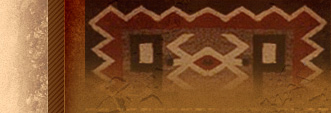 |
 |
| |
Burning Through the Roots, Part 8
|
|
| |
By morning, 38 of the 150 escapees were still free, and 32 of them were together in one group heading west along Pine Ridge. They had gone straight up the 75-foot cliffs behind Fort Robinson, forcing the soldiers and their horses to go six miles around and giving the Cheyenne a small lead (Figure 24). For the next 13 days they ran, fought, ran, and fought with five companies of cavalry armed with cannon. The temperatures hit 28 degrees below zero at night. The Cheyennes' steps took them straight through the place where a major wildfire would burn thousands of acres in 1984, then straight through the place where the 2006 wildfire would burn, and right through Sowbelly Canyon itself (Figures 25-27). The ranchers who were the ancestors of the ranchers of Pine Ridge today gathered in Sowbelly in fear, built a small fortified cabin in the northern end of the canyon and against the west wall for protection. The Indians left them alone. They just wanted to get home.
Nearly thirty miles west of Fort Robinson, the people made a break across the troop lines and out onto the short-grass prairie flats. There they were caught a final time and made a stand in a large old buffalo wallow. The soldiers fired into it until no one moved any more. A few wounded children were found alive in the bottom, beneath all the other people, in a pool of freezing blood. One of the children who survived the Hole healed from her wounds, grew up to be an old woman, and told Mari Sandoz what had happened in that place. And Sandoz, hearing it, understood what the soldiers had killed: "a rich and mystical perception of all life as a continuous, all-encompassing eventual flow, and of man's complete oneness with all this diffused and eternal stream. It was a stream of many and complex dimensions, one in which man, the tree, the rock, the cloud, and all the other things that had ever been in a place were always in the present there, in the being and occurring."
This is indeed the wisdom of Indigenous peoples, only I would change Sandoz's statement to present tense. The Northern Cheyenne are not an extinct people for one thing. But also, the wisdom Sandoz describes has not died even though many of the Indigenous people around the world who hold it have been killed. They have been killed specifically to kill this wisdom, to obliterate it in a river of blood, but it has not died. It burns within the roots of the Land, and within the hearts of all those People represented here, in this place of the Heard Museum, dedicated to the cultures of Indigenous nations. It burns close to the surface of the Earth now, in these times -- hot and bright as a flame.
The ranchers hiding in the little fort cabin under the lee of a creek bank in Sowbelly certainly did not see life as a continuous, all-encompassing stream. They divided life into compartments and the land into parcels. They put up fences to keep their cattle from being stolen or lost, and to keep them from wandering off to better pasture when their own range got overgrazed. And the pressure of too many cattle on not enough land grew until the land began to stagger under the load. This was the second thing that smoldered beneath the roots of Pine Ridge: the story of a strong land crippled by people enslaving it for personal profit.
|
|
|
|
|
|
 |
|
|

